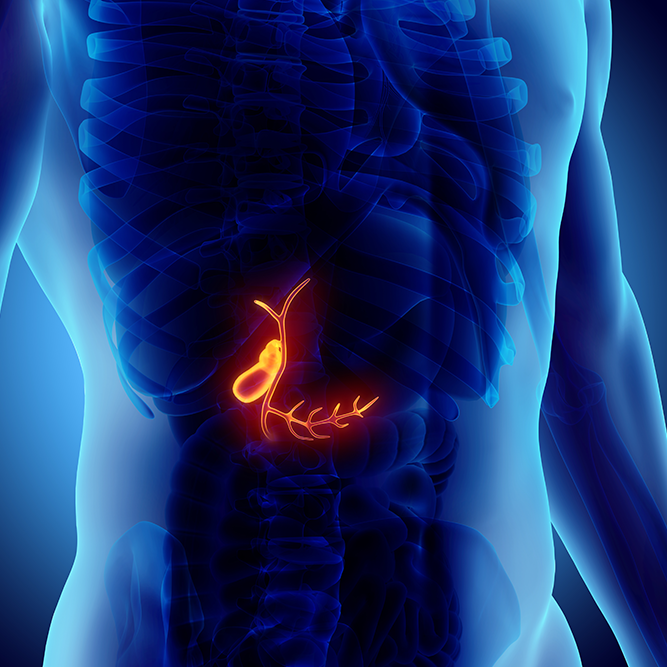Gallbladder FAQ
What is a gallbladder?
The gallbladder is a storage tank for bile. Bile, created in the liver and stored in the gallbladder, is secreted into the intestine to help your body absorb fat in foods that you eat. The gallbladder is stimulated by a meal, and in turn squeezes to release extra bile to aid in digestion.
Who is most at risk for gallstones?
Women are more prone than men to get gallstones because pregnancy predisposes women to get stones. Some people with high cholesterol are also at risk.
Are gallstones dangerous?
Gallstones can be dangerous. But, while 20 million people in this country have gallstones, in most people they don’t cause a problem. In the patients where stones cause serious problems, it usually involves complications with their liver or pancreas. Anyone who has symptoms from gallstones should be evaluated for surgery. Patients who have diabetes and gallstones are at high risk of infection and some surgeons recommend surgery regardless of symptoms.
What are symptoms from gallstones?
Typical gallbladder symptoms include pain or discomfort in the upper abdomen after eating, often in the middle or just under the ribs on the right side. Sometimes the pain or discomfort can be felt in the back as well. Some patients have nausea or vomiting, and some patients only feel indigestion after eating, often accompanied by a “gassy” feeling. Most symptoms are worse after fried or fatty foods, but sometimes any food can trigger an attack.
When should I see a surgeon for gallstones or gallbladder pain?
If you have any of the above symptoms and have been diagnosed with gallstones, you should be evaluated by a surgeon.
Do I need any special x-rays?
Most patients only need an ultrasound, an inexpensive test that has no radiation. Additional testing to diagnose gallstones is rarely needed but if it is necessary, your surgeon will order it.
What are my treatment options for gallstones?
While medications, lithotripsy and even Chinese herbs have been used in the past, laparoscopic surgery is the best treatment for patients with symptoms from gallstones.
What is laparoscopic gallbladder surgery?
Laparoscopic gallbladder surgery has been around for over 25 years now. It involves small (1/4 – ½”) incisions in the abdomen to allow for long thin instruments to do the same kind of surgery that was done through 6-12″ long incisions. This kind of surgery has become the the standard of care for gallbladder, appendix, colon and other abdominal operations. In the case of gallbladder surgery, 4 small holes are made and the gallbladder is removed from the belly button.
Is gallbladder surgery safe?
Yes, gallbladder surgery is safe. Most patients go home right after surgery. Less than 1 in 100 people have a complication (such as bile leaking from the liver area where the gallbladder was). This can easily be solved by a procedure performed by a gastroenterologist, called an ERCP. Sometimes people have an extra stone in the bile ducts that drain the liver, and this too can be taken care of with an ERCP. About 1 in 500 people need an additional operation to repair the ducts that drain the liver. This occurs most often with severely infected gallbladders, and is one of the reasons not to delay gallbladder surgery.
What should I expect on the day of my laparoscopic gallbladder surgery?
You will need to come to the hospital about 90 minutes before surgery. This allows plenty of time for parking and registration. Once you register, you will be taken to the surgical center where you will change into an appropriate gown for the operating room and an IV will be started. You will then meet with the nurses and the anesthesiologist. Your surgeon will stop by to meet with you and whoever is with you and give you time to ask a few questions. Surgery time is about 1-1.5 hours, after which you will spend about 2 hours recovering.
What should I expect after my laparoscopic gallbladder surgery?
Most people can return to work about 1 week after their gallbladder surgery and resume normal exercise 2 weeks after surgery.
Since the gallbladder is important to the digestion of fats, it is important to stay on a low fat diet the first few weeks after surgery. Over time, the body will adjust and patients can typically eat whatever they want. However, fatty foods should slowly be added to the diet. If fats are added too quickly, patients may feel crampy abdominal pain, loose stools and gassiness.
What is Biliary Dyskinesia?
This is a condition where the gallbladder and sometimes the bile ducts loose their ability to function normally. Sometimes this is temporary, but often permanent. Symptoms are often the same as when people have gallstones, but the ultrasound is normal. A special scan, called a HIDA scan, performed while having a fatty drink can help diagnose the problem. Surgery helps almost everyone with this condition, but it is important to make the diagnosis and talk with your surgeon.

